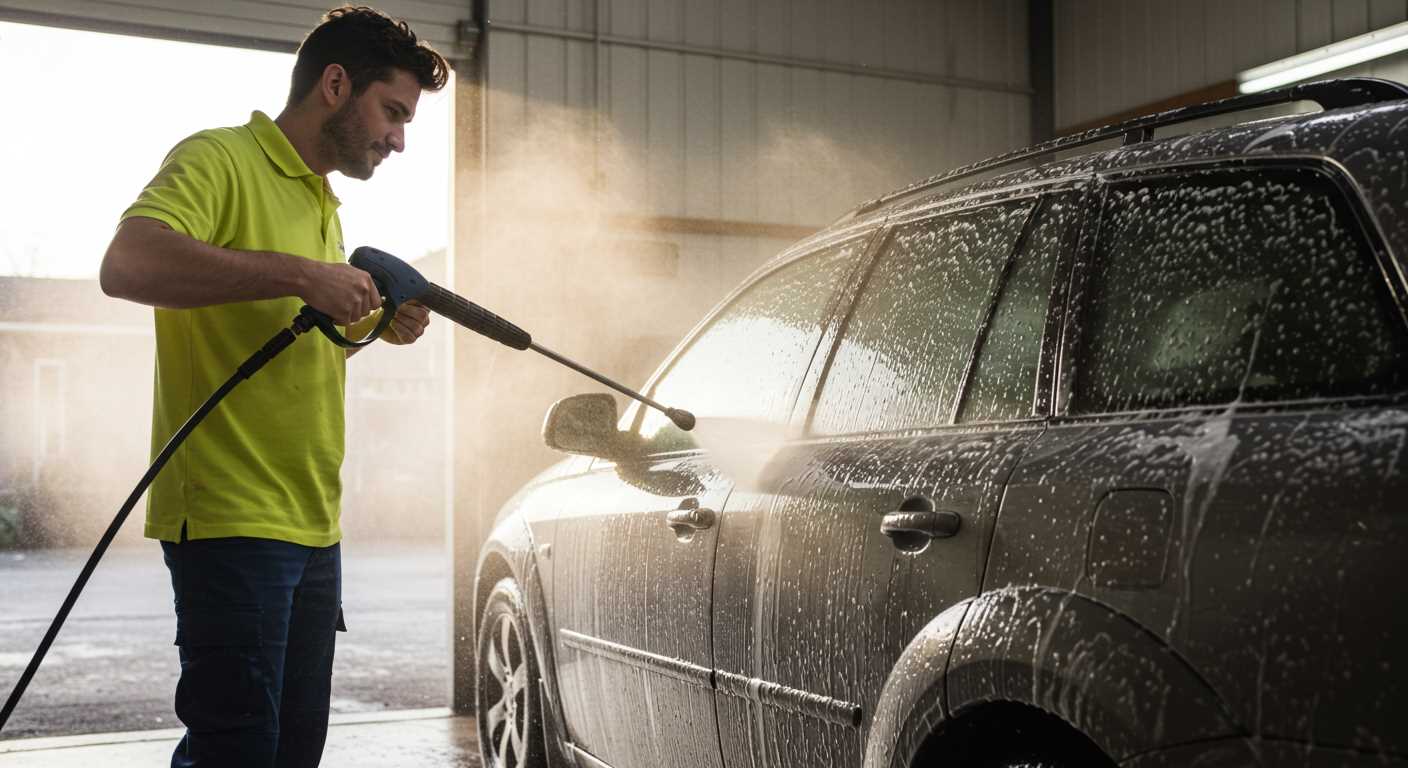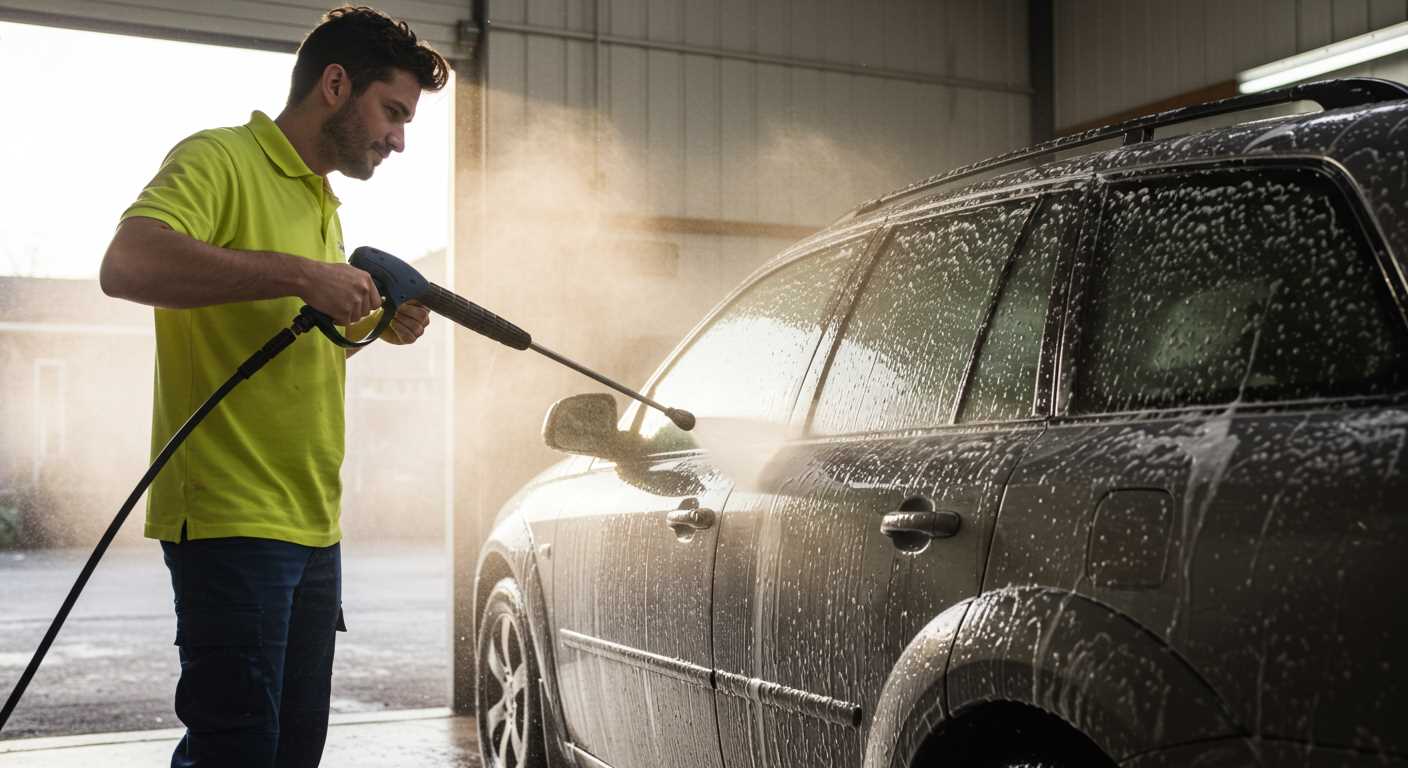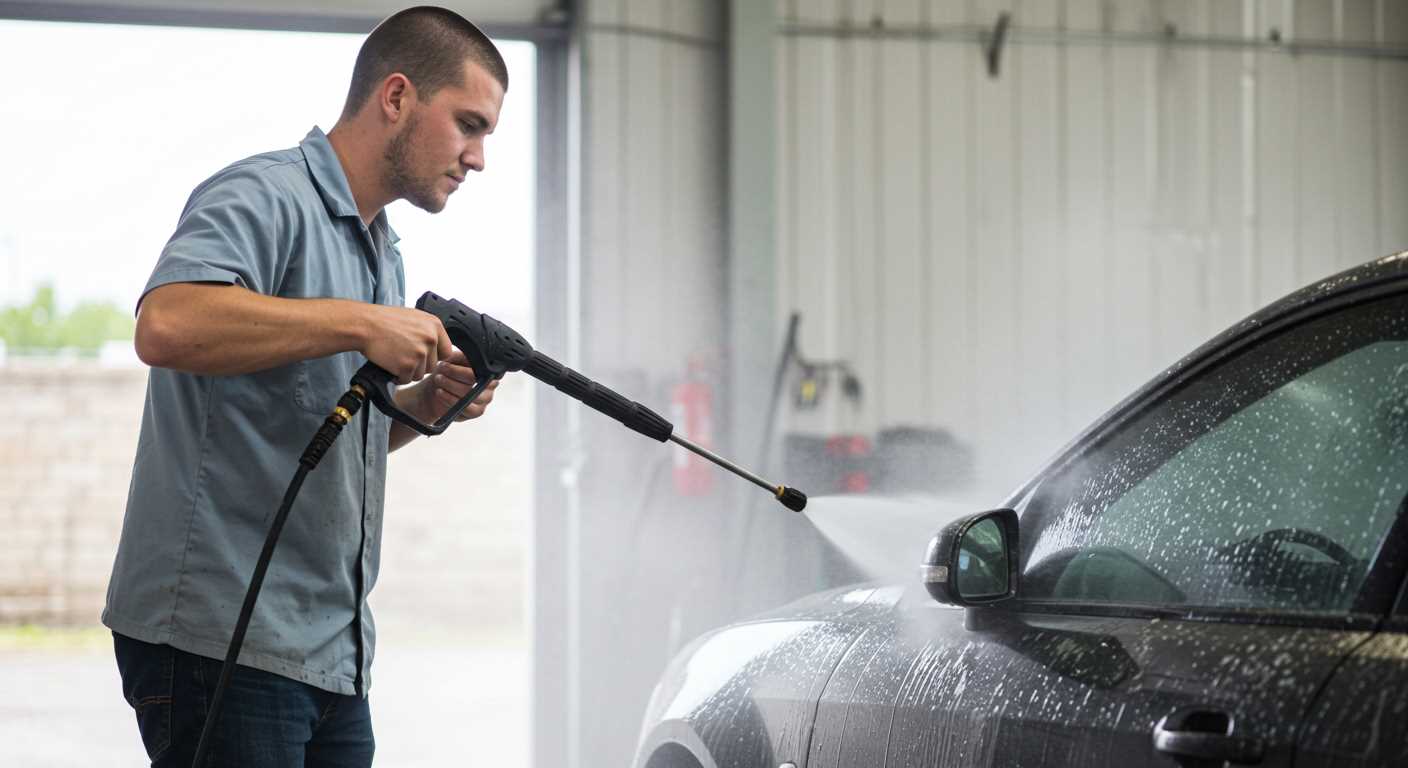




Always opt for biodegradable solutions that effectively tackle dirt while being gentle on the environment. During my years in the cleaning equipment industry, I found that eco-friendly formulas not only deliver impressive results but also prevent damage to surfaces and surrounding vegetation.
One of my go-to choices has been alkaline cleaners for removing heavy grease and grime. For instance, while working on a fleet of delivery vehicles, I discovered that a strong alkaline solution cut through the stubborn buildup that traditional soap struggled with. Just remember to rinse thoroughly after application to avoid residue.
For lighter tasks, such as washing outdoor furniture or cleaning patios, consider using a mild, pH-balanced product. I once used a gentle cleaner on a client’s beautiful wooden deck, and the results were phenomenal. It preserved the wood’s integrity while effectively removing mildew and stains.
Always check compatibility with your equipment before using any mixture. Some formulations can cause wear or damage to components. I once encountered a situation where an incompatible cleaner led to costly repairs on a machine, a mistake I never repeated. Always consult the manufacturer’s guidelines or seek advice from professionals in the field.
Understanding the Different Types of Detergents
Choosing the right cleaning solution can transform your cleaning task from a chore to a straightforward job. From my experience, I’ve found that there are three main categories of solutions tailored for specific tasks: alkaline, acidic, and non-ionic. Each serves a unique purpose and is best suited for particular surfaces and types of grime.
Alkaline Solutions
These are particularly effective against organic stains and grease. I once tackled a long-neglected patio covered in oil stains from a barbecue. An alkaline cleaner worked wonders, breaking down the grease and making the surface look new again. When selecting an alkaline formula, look for one with surfactants that enhance the solution’s ability to cling to vertical surfaces, ensuring it has time to act on the grime.
Acidic Solutions
On the other hand, acidic cleaners excel at removing mineral deposits and rust. A memorable job involved cleaning a weathered stone fountain that had developed unsightly calcium build-up. An acidic cleaner not only restored the fountain’s shine but also prevented future deposits. Always remember to test acidic solutions on a small, inconspicuous area first, as they can damage certain finishes if left too long.
Non-ionic options are milder and versatile, suitable for various surfaces without the risk of damage. I often turn to these for delicate tasks, such as cleaning vehicles or painted surfaces. They provide a balance, effectively lifting dirt without harsh chemicals.
Ultimately, understanding these categories ensures choosing the right approach for any cleaning scenario. Each solution has its strengths, and applying the correct one can save time and enhance results significantly.
Choosing Detergents for Specific Cleaning Tasks
For outdoor surfaces like patios and driveways, a heavy-duty cleaner with degreasing properties works wonders. I remember tackling a particularly greasy barbecue area; a biodegradable formula lifted the grime effortlessly, leaving the surface spotless.
- Concrete: Look for a cleaner designed specifically for concrete. These often contain surfactants that penetrate deeply, breaking down tough stains.
- Wood: Use a gentle, biodegradable solution that preserves the wood’s finish while effectively removing dirt and mildew. I’ve seen great results with plant-based cleaners.
- Vehicles: A pH-neutral solution is ideal. It won’t strip wax or damage paint. I once used a product that was both effective and safe for my car’s finish.
When dealing with mould and mildew, a product with mould-inhibiting properties is crucial. I had a situation where a client’s patio was covered in black spots; a solution containing sodium hypochlorite did the trick, restoring the surface without much effort.
- Glass: For windows, a streak-free cleaner is a must. A specific formulation designed for glass surfaces prevents smearing and enhances clarity.
- Fencing: If it’s wooden or vinyl, opt for a cleaner that targets algae without harming the material. I once had to clean a wooden fence, and using a dedicated wood cleaner saved the finish.
For garden furniture, select a product that’s safe for outdoor use but tough on dirt. I’ve found that a cleaner with UV protection helps maintain the look of plastic furniture over time.
Finally, always check compatibility. Mixing different formulations can lead to unwanted reactions or diminished effectiveness. I recall a time when combining two solutions resulted in a foamy mess that required extra cleaning. That experience taught me to read labels carefully and follow manufacturer instructions.
How to Read Labels and Ingredients in Cleaning Agents
Always check the label for active components. Look for surfactants, which lift grime, and solvents that dissolve tough stains. For example, sodium hypochlorite is effective on mould and mildew, while citric acid is great for hard water deposits. If you see enzymes listed, that indicates a biological approach to breaking down organic materials.
Be mindful of pH levels. Alkaline solutions work well on greasy spots but can harm certain surfaces. A pH around 7 is neutral, making it safe for most applications. If you’re unsure, I recommend testing on a small area first. I once accidentally damaged a wooden deck because I used a highly alkaline solution without checking the pH.
Watch out for additional fragrances and dyes. While they might make the product more appealing, they can be harsh on surfaces and might not be necessary. When I tested various formulations, I found that unscented options often performed just as well without risking surface damage.
Labels often indicate dilution ratios. Following these guidelines is key; using concentrated solutions without diluting can lead to unexpected results. I remember a time when I used a highly concentrated cleaner on a driveway without dilution, thinking it would be more effective. The result was a streaky mess that took ages to fix.
Check for compatibility with your equipment. Some cleaners can be too harsh and may damage internal components. I once had a colleague who ruined a pump by using an incompatible solution, resulting in costly repairs. Always verify that the agent suits your machine’s specifications.
Lastly, pay attention to safety warnings. Look for symbols indicating corrosiveness, irritation, or toxicity. When dealing with harsh chemicals, personal protective equipment such as gloves and goggles can prevent accidents. I learned this the hard way after a minor spill that caused irritation; now I never skip this step.
Compatibility of Cleaning Solutions with Washer Models
Always check your equipment manual before choosing a cleaning solution. Each model has specific requirements, and using incompatible substances can cause damage or void warranties. For instance, machines designed for residential use often require milder formulations, while commercial units may handle stronger options.
Manufacturer Recommendations
Many brands provide guidance on compatible cleaning agents. Following these recommendations ensures optimal performance and longevity of your equipment. I recall helping a client who used a high-powered unit with an incorrect solution, resulting in a clogged injector. After switching to the recommended mixture, their machine functioned flawlessly.
Testing and Adjustments
When trying a new cleaner, start with a small area. This allows you to gauge how the solution interacts with your washer and surfaces. I once tested a promising product on my patio; it worked wonders on grime but left streaks on my tiles. Adjusting the dilution ratio resolved the issue, highlighting the importance of careful experimentation.
Finally, always look for compatibility with your model before use. A simple search online or a quick call to the manufacturer can save you time and hassle. Remember, just as a digital cameras image quality is determined by the cameras, the right cleaning solution is key to achieving the best results with your equipment.
Environmental Considerations When Selecting Cleaners
Opt for eco-friendly options that minimise harm to the environment. Many products contain harsh chemicals that can leach into soil and waterways, affecting local ecosystems. Look for biodegradable and non-toxic formulations that break down naturally without leaving harmful residues.
Assessing Ingredients
When shopping, scrutinise the ingredient list. Ingredients like phosphates can lead to water pollution and algal blooms, disrupting aquatic life. Avoid products with synthetic fragrances and dyes, as they often contain toxic compounds. Instead, choose those with plant-derived ingredients that are safer for both users and the environment.
Packaging Choices
Consider the packaging as well. Opt for brands that use recyclable materials or offer refill options to reduce plastic waste. Some companies even provide bulk purchasing, allowing you to minimise packaging and save money at the same time. Every small choice contributes to a larger impact on sustainability.
Lastly, always follow local regulations regarding the disposal of cleaning agents. Improper disposal can lead to serious environmental repercussions. By making mindful selections, you can maintain your equipment effectively while also being a responsible steward of the planet. For those looking to enhance their washing experience, investing in a short trigger pressure washer gun can provide better control and efficiency, complementing your eco-friendly choices.
Tips for Properly Diluting and Mixing Cleaning Solutions
Always follow the manufacturer’s guidelines for dilution ratios. I recall one time I mixed a solution too concentrated, thinking it would boost cleaning power. Instead, it caused streaking and left residue, which led to extra work. Stick to the recommended ratios to avoid such mishaps.
Use a measuring cup or a syringe for accuracy when measuring liquids. This ensures consistency across batches and prevents any guesswork. I learned this the hard way after a few sessions of uneven cleaning results that left me scratching my head.
When mixing, add the concentrate to water, not the other way around. This helps to avoid splashes and ensures a more uniform blend. I remember mixing solutions incorrectly a couple of times, and it always resulted in a mess. The right order makes a noticeable difference.
Utilise a clean container for mixing. Residual chemicals from previous mixtures can interfere with the effectiveness of the new solution. I’ve had a few unfortunate experiences where leftover substances reacted, creating a less effective cleaning agent.
For larger jobs, consider using a mixing pump or dispenser that can handle higher volumes. I often find this saves time and ensures consistency, especially when working on extensive projects like cleaning a driveway or large patio.
Always wear appropriate protective gear, such as gloves and goggles, when handling concentrated solutions. I’ve had a few close calls with splashes, and it’s not worth the risk to your skin or eyes.
If you’re unsure about a particular blend, test it on a small, inconspicuous area first. This trial-and-error approach has saved me from potential disasters many times. If it doesn’t perform as expected, you can adjust before applying it to the entire surface.
| Tip | Description |
|---|---|
| Follow Guidelines | Adhere to manufacturer’s recommended dilution ratios to avoid issues. |
| Measure Accurately | Use measuring tools for consistent results. |
| Add Concentrate to Water | This prevents splashes and ensures even mixing. |
| Clean Mixing Containers | Avoid contamination from previous mixtures. |
| Consider Larger Equipment | Use pumps for extensive jobs to save time and ensure uniformity. |
| Wear Protective Gear | Protect yourself from potential splashes and reactions. |
| Test First | Always try a small amount on an inconspicuous area before full application. |
Common Mistakes to Avoid When Using Detergents
Avoiding the following pitfalls can drastically improve your cleaning results and protect your equipment.
Using the Wrong Concentration
- Always follow the manufacturer’s instructions for dilution. Too strong a mix can damage surfaces and equipment.
- Test a small area before full application to see how the solution interacts with the surface.
Ignoring Surface Compatibility
- Check if the cleaning agent is suitable for the material you’re treating; certain substances can cause etching or discolouration.
- Be cautious with delicate surfaces like wood or painted areas; a milder formula might be necessary.
Neglecting Rinsing
- Always rinse thoroughly after applying a cleaning solution. Residue can attract dirt and lead to accelerated wear on surfaces.
- Use fresh water and a wide spray pattern to ensure all remnants are removed.
Mixing Different Products
- Avoid combining various cleaning agents unless explicitly stated as safe. This can lead to harmful reactions.
- Stick to one brand or formula to simplify your cleaning process and avoid unexpected results.
Forgetting Equipment Maintenance
- Regularly clean your nozzle and other components to prevent clogs caused by residue from cleaning agents.
- Inspect seals and hoses for damage, as chemical exposure can deteriorate these parts over time.
By steering clear of these common errors, you’ll not only enhance your cleaning efficiency but also extend the lifespan of your equipment. Each session becomes more effective, saving you time and resources in the long run.




.jpg)


